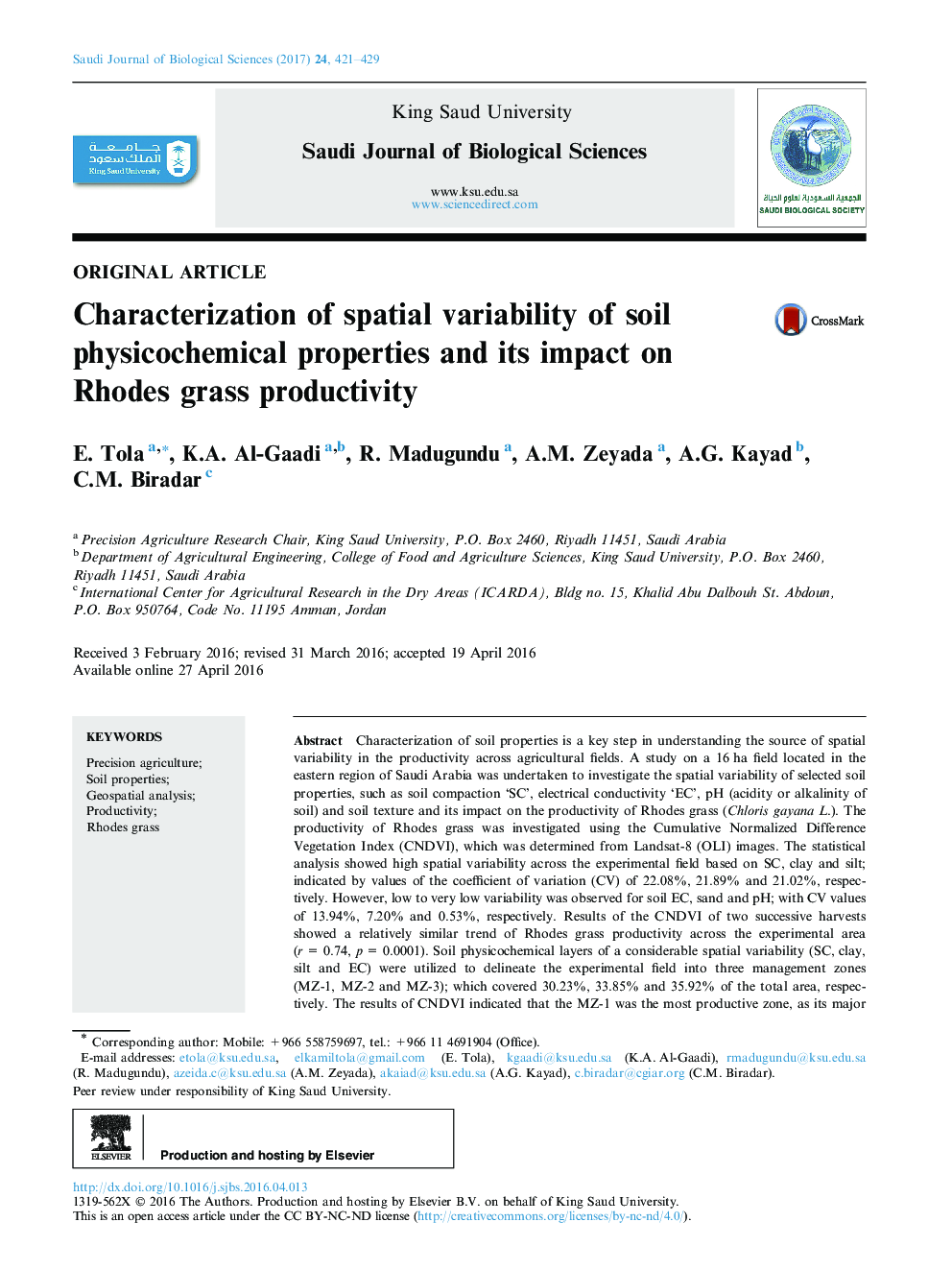| Article ID | Journal | Published Year | Pages | File Type |
|---|---|---|---|---|
| 5745642 | Saudi Journal of Biological Sciences | 2017 | 9 Pages |
Characterization of soil properties is a key step in understanding the source of spatial variability in the productivity across agricultural fields. A study on a 16 ha field located in the eastern region of Saudi Arabia was undertaken to investigate the spatial variability of selected soil properties, such as soil compaction 'SC', electrical conductivity 'EC', pH (acidity or alkalinity of soil) and soil texture and its impact on the productivity of Rhodes grass (Chloris gayana L.). The productivity of Rhodes grass was investigated using the Cumulative Normalized Difference Vegetation Index (CNDVI), which was determined from Landsat-8 (OLI) images. The statistical analysis showed high spatial variability across the experimental field based on SC, clay and silt; indicated by values of the coefficient of variation (CV) of 22.08%, 21.89% and 21.02%, respectively. However, low to very low variability was observed for soil EC, sand and pH; with CV values of 13.94%, 7.20% and 0.53%, respectively. Results of the CNDVI of two successive harvests showed a relatively similar trend of Rhodes grass productivity across the experimental area (r = 0.74, p = 0.0001). Soil physicochemical layers of a considerable spatial variability (SC, clay, silt and EC) were utilized to delineate the experimental field into three management zones (MZ-1, MZ-2 and MZ-3); which covered 30.23%, 33.85% and 35.92% of the total area, respectively. The results of CNDVI indicated that the MZ-1 was the most productive zone, as its major areas of 50.28% and 45.09% were occupied by the highest CNDVI classes of 0.97-1.08 and 4.26-4.72, for the first and second harvests, respectively.
